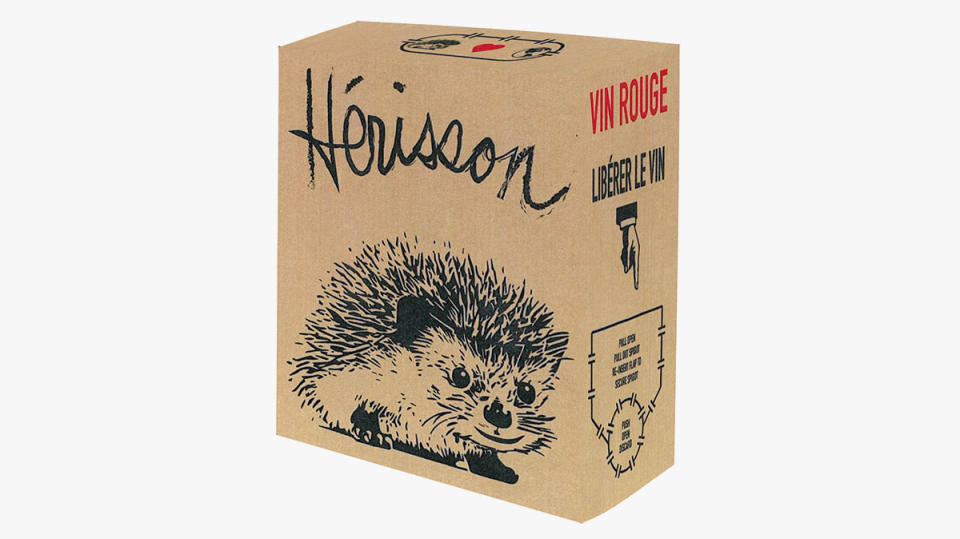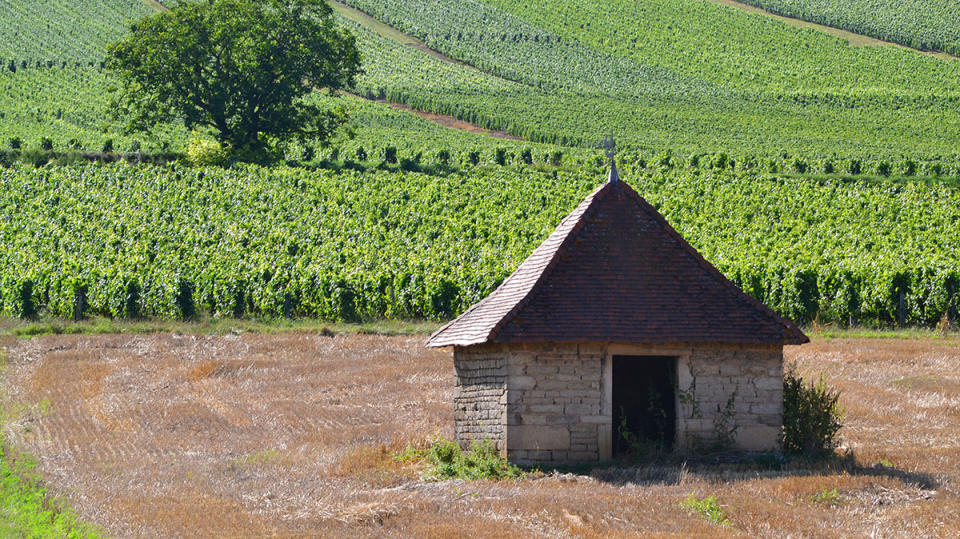Seriously, Boxed Wine Is Really Good Now

This story is from an installment of The Oeno Files, our weekly insider newsletter to the world of fine wine. Sign up here.
One evening, with friends gathered at our home, we would occasionally disappear downstairs to the cellar and return with crystal decanters filled with wine. Our guests had no idea the subterfuge that was afoot. Unbeknownst to them, we were filling those decanters from a five-liter box that we had picked up at a winery in Spain. Since none of our guests could ever imagine that we would pour wine from a small plastic pouch in a rigid paper container, they just assumed that we had bought a barrel somewhere in our travels—and, admittedly, we did nothing to dispel that impression.
More from Robb Report
The Largest Private Wine Collection Ever Auctioned Is Heading to Sotheby's
Meet the Fixer That'll Get You Inside the Rarefied World of Burgundy
The King of Sonoma Pinot Noir Has Created Another Outstanding Winery
That’s because for years, wine that comes in boxes rather than bottles has rightfully been the butt of many jokes. As a friend once put it, “Next time we order wine at a bar, let’s make sure it’s opened with a corkscrew, not a box cutter.” And who among us has not responded to the meme “It’s no longer boxed wine! The classy name is Cardboardeaux!” with a laughing emoji? Well, get ready to stop laughing and start sipping, because we are here to tell you we’re in a new era of boxed wine. From the packaging design to the juice inside, boxed wine has upped its game considerably to the point where we’d no longer feel compelled to hide our cardboard container in the cellar.
Leading the charge toward increased quality is a group of top wine brands who have banded together to form the Alternative Packaging Alliance with the aim of altering the perception of boxed wine and reducing the environmental impact of wine packaging. While environmental stewardship is a primary concern, this coalition of producers is also making wine that comes from distinct places, with appellations, AVAs, and even vineyard sites listed on the box. We’ve been impressed by the quality.

Juliet Central Coast Pinot Noir and Chardonnay are each sourced from California Certified Sustainable Winegrowing (CCSW) vineyards and made in a low intervention style. Its 2022 Pinot Noir has aromas of red cherry, raspberry, caramel, and dried Mediterranean herbs. Its black-cherry, raspberry, butterscotch, and aniseed flavors are wrapped in a layer of soft, silky tannins. And the Juliet 2022 Chardonnay offers a nose of pear and crème brulée. It has flavors of pear, apple, vanilla, and a touch of fennel pollen with bright acidity on the finish. Founders Allison Luvera and Lauren De Niro Pipher didn’t just make the juice inside the box great, they introduced cylindrical packaging that looks for far chicer than a carton of Franzia.
Melissa Monti Saunders, the founder of Communal Brands, is a producer, importer, and distributor whose Hérisson AOP Côteaux Bourguignons is made by Domaine Rochebin in southern Burgundy. We found the 2023 vintage to have aromas of violet, lavender, and brambly fruits of the wood. It is an easy-drinking red with a fruit forward palate of raspberry and pomegranate, a pleasant sense of earthiness, feathery tannins, and a note of roasted red pepper on the finish. In addition to the environmentally friendly packaging, Saunders tells Robb Report, “Rochebin is also farming responsibly, with organic practices in the vineyards and highly sustainable practices in the winery.” She also imports Schplïnk Gruner Veltliner, produced by Weingut Norbert Bauer in Austria. The 2023 Schplïnk offers a bouquet of citrus blossom, jasmine, and Fuji apple. Its floral notes transfer to palate alongside flavors of golden Delicious apple and lemon grass bathed in vivid acidity.
While none of these wines is particularly inexpensive, they are also not break-the-bank special occasion wines. They are the perfect bottles—er, boxes—to keep in the fridge in your pool house, bring out on your boat when you’re hosting a crowd, or have on hand for summer parties and barbecues. They don’t need to be finished in one sitting, as they won’t oxidize the way an open bottle will; you can safely use a box over the course of a month. But the most important point that the alliance wants to bring to the forefront is that this type of packaging is better for the environment. “The bag-in-box format remains the most eco-friendly wine packaging style available,” Pipher says. “Due to their heavy weight and irregular shape, glass bottles are actually the single largest contributor to the wine industry’s carbon footprint, so by drinking your wine from a box versus bottle you are significantly reducing the wine’s impact on the planet.”

Other brands involved in the alliance are Ami Ami, Really Good Boxed Wine, Giovese Family Wines, Nomadica, and Tablas Creek. Communal Brands’s Saunders believes that their spirit of cooperation rather than competition will increase sales of boxed wine. “Collaborative efforts can yield powerful results,” she tells Robb Report. “We are all producing very distinct wines and there is room for all of us.”
Saunders makes a good point there; while several years ago the generic boxed wine we encountered may not have had an appellation or even a variety listed on its label, the wines we tried are from different places and have specific taste profiles. We also tried a pair of wines from Really Good Boxed Wine, a California producer whose three-liter boxes range from $70 to $120. Really Good Boxed Wine 2022 Sauvignon Blanc from the Russian River Valley has a bouquet of grapefruit, guava, and freshly chopped parsley. It is very refreshing, with notes of green pepper and fresh green herbs mingling with flavors of Valencia orange and passion fruit. Their 2021 Pinot Noir from the San Luis Obispo Coast AVA features aromas of cranberry, cherry, and crumbled thyme. Bright-red fruit is joined on the palate by notes of cocoa powder, orange zest, and sage leaf that linger into a long finish.
One thing that won’t linger with boxed wine is the packaging. The cardboard is fully recyclable, and while the plastic reservoirs may not be, several producers, including Juliet, offer a take-back initiative for consumers whose local recycling programs do not accept this type of plastic. “For the environmentally conscious wine lover, this format offers the most responsible choice for the planet,” Luvera says. “With quality no longer a compromise, embracing the boxed format is a win-win proposition that minimizes environmental impact without sacrificing enjoyment.” And like a satisfying glass of wine, doing your part to save the planet leaves a good taste in your mouth.
Do you want access to rare and outstanding reds from Napa Valley? Join the Robb Report 672 Wine Club today.
Best of Robb Report
Why a Heritage Turkey Is the Best Thanksgiving Bird—and How to Get One
The 10 Best Wines to Pair With Steak, From Cabernet to Malbec
Sign up for Robb Report's Newsletter. For the latest news, follow us on Facebook, Twitter, and Instagram.


